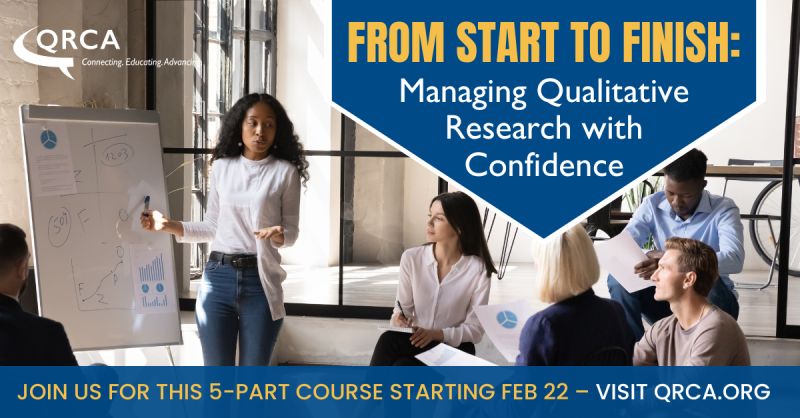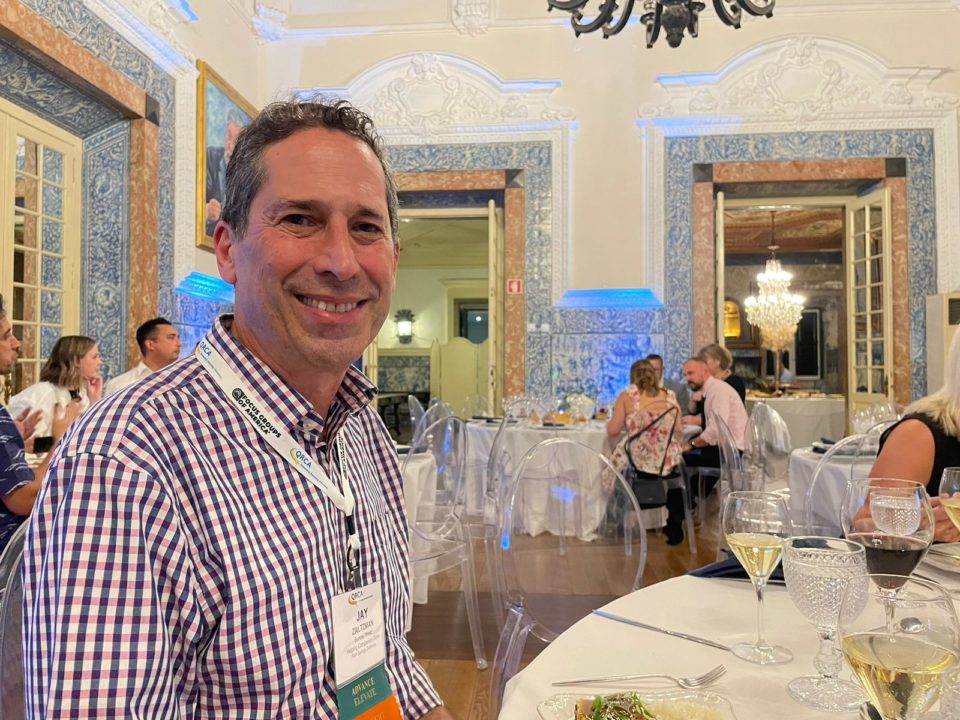I’m excited to have been chosen as one of the industry experts presenting the Qualitative Research Consultants Association (QRCA) course series “From Start to Finish: Managing Qualitative Research with Confidence.” I will be presenting the training on best practices for developing/evaluating discussion guides.

Discussion guides are where the rubber meets the road when it comes to getting accurate answers to research questions. Some clients may not realize that simply asking the research questions in order of importance usually will not get us accurate answers. Some reasons for this:
- People might initially feel uncomfortable when talking to a stranger.
- If we start by asking about specific ideas, we might bias people, and then we don’t get an accurate read about their general thoughts and feelings.
- People have a tendency to tell us what they think they should say, rather than what they really think.
For example, imagine a company developing a new luxury travel product. Their main objectives are to find out if the product appeals to their target audience, if the cost seems reasonable, and how they feel about specific elements of the offering. If we were to conduct focus groups where we started by presenting a description of the product, we would run the risk of receiving inaccurate input.
Instead, I would recommend starting with a general discussion about how participants approach travel. This would help people feel comfortable, and they would realize that the others in the group are people who have similar travel experiences (so, for example, they wouldn’t need to worry about seeming arrogant in front someone who is more interested in budget travel).
Then we would want to understand how people make the purchase decision for a luxury travel product like the one being researched. We know that people think they make their decisions completely rationally, by weighing the benefits versus the price, but we also know that’s not the case: emotional factors play an important role in the decision. So we might utilize projective techniques to get at that emotional aspect (for example, have them imagine two friends discussing this potential purchase and write down what each of them says; then write what each of them is really thinking).
Only after that would we actually expose the concept of the new product. We might ask participants to write down their initial responses (to get their gut reaction before they hear others’ reactions). When we discuss the concept, we might encourage participants to have conversations with each other, where one likes the concept and one doesn’t and ask them to persuade each other. While some people worry about the group dynamic in focus groups, these kinds of conversations happen in the real world all the time; by listening in, we can learn what elements are likely to sway people in favor of our concept and what issues might need to be addressed.
Those are just some examples; I encourage you to sign up for the course for a more detailed look.
And before I go, one more tip: I like to include a final question in the discussion guide, asking participants to write a postcard to the company with their advice to the CEO on the topic discussed. This is an opportunity for any final thoughts, and also lets people express any thoughts they might not have been comfortable saying out loud.
How can you get accurate answers to your research questions? Email me at info at bureauwest.com and let’s discuss!

